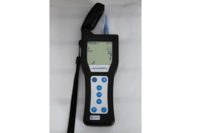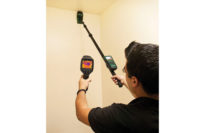Prepping for Disaster
With spring storm and Atlantic hurricane season right around the corner, restoration businesses need to be prepared to take advantage of a likely increase in work.










Organizations with training in water damage and fire restoration will soon be faced with spring storm and hurricane season. Experience and insight are perfect elements alongside having enough drying equipment, trained technicians, the right Personal Protection Equipment (PPE), satellite phones, sleeping spaces and possibly meals ready to eat.
Federal Emergency Management Agency (FEMA), Voluntary Organizations Active in Disasters (VOAD) and others deliver outstanding service for victims because they are the ultimate “preppers.” You, like them, play a unique role in the recovery of such properties. You have the specialized knowledge and skills to return damaged property to pre-loss conditions, providing you are ready, have the right tools, in the right place, at the right time and know how to use them.
There is no doubt that floods are among the most frequent and costly natural disasters we endure. Heavy rain that lasts for hours, flash floods, inadequate drainage systems, high tides and broken pipes quickly saturate buildings and drying them takes vast quantities of equipment.
Recently, at the Xactware User Conference in Salt Lake City, Belfor Restoration proudly displayed their new command center, a state-of-the-art mobile office with redundant communication systems (i.e., satellite communication, Internet, cell phones). Paul Davis Systems, Business Networks, ServiceMaster, Restore Core, and many others were there listening and meeting to plan for future disasters. Planning is key.
The Right RespiratorOf all the PPE you’ll need when responding to disaster, respirators are among the most important. There are three main types of respirators: face piece respirators, half-face APR respirators and full-face APR respirators. Both half-face APRs and face piece respirators are rated with a protection factor of 10, which means if there are 100 particles in the air, they will filter out a factor of 10. The aforementioned are ideal for large particles, but not for fine particulate such as bacteria and viruses. That’s where a full-face APR respirator comes in handy, as it keeps fine particulates out and also offers eye protection. But before a worker can wear a full-face, let alone any respirator on the job, they must first get fit tested. Says Bill Weber, Anderson Group International: “There’s two tests – one that’s quantitative and one that’s qualitative. First, the employee needs to be able to wear a respirator. That’s determined through a pulmonary function test. They’ll take a respiratory physical. They have to be physically able to wear a respirator. After they’re cleared to wear a respirator, then they get fitted. Then, every time they put that respirator on, they do a fit test where they (plug) the respirator cartridges and they breathe in and they shouldn’t be getting air. Then they block the exhalation valve and they breathe out – and they shouldn’t be able to breathe out anything. That’s how you know you have a good fit.” |
We have all heard NOAA Weather Radio discuss flood warnings or watches and reports of flooding in progress from the National Weather Service. The media reporters standing at the water’s edge or knee deep in flood waters talking about the need to be ready to evacuate at a moment’s notice. Restoration contractors need to be ready too. In areas where flooding is possible, multiple organizations have the same goal - more air movers, heat drying systems, dehumidifiers, generators, PPE, thermal imaging cameras, moisture and ATP meters, and the list goes on and on. Herein lies the problem, the manufacturers and distributers want more supplies too - however supply is limited.
One opportunity that has recently become mainstream is protecting buildings by applying a bonded antimicrobial, a barrier, to prevent bacteria and mold growth before it occurs. Organosilane technology has been proven to be effective against a huge array of microbes found in flood waters.
Disaster restoration is a time-limited process by which a company must plan for and achieve realistic goals for future equipment needs before the need for additional equipment exists. Long before a company can mobilize to assist flood victims, equipment and resources necessary for drying wet structures must be acquired. In order to re-establish normalcy in a flooded area, organizations must act like the “preppers” shown in the media.
It is very fulfilling when your restoration company and its employees help others get back to their homes, however, don’t neglect your staff whose families may have the same issues with flooding, making it difficult for them to leave. Part of your plan may need to include helping families of workers so that you don’t lose key people when you need them most.
One other critical need is resources for rental equipment. Oftentimes, like the manufacturers and distributers, rental companies run low on available resources, so establish an account with a rental company ahead of time.
I am always amazed when a storm is predicted how crowded the supermarkets become. Store shelves once full of basic supplies are bare in a matter of minutes. With that in mind, in addition to drying equipment you will need:
- Communication equipment (satellite and cell phones)
- Chargers for phones
- Generators
- Moisture meters
- Remote systems to turn on and off drying equipment
- ATP meters and swabs
- First aid kits
- Food and water (one gallon per person per day)
- Flashlights and batteries
- Maps of the territory
- Sanitization supplies
- Clothing, rain gear, boots, hard hats, PPE
- Housing and fuel
Pre-planning and advance purchases have helped many in our industry to succeed when disaster strikes. I strongly recommend that all disaster restoration companies have a plan in place to succeed. Help is needed everywhere when flood season starts. Why not be prepared?
Looking for a reprint of this article?
From high-res PDFs to custom plaques, order your copy today!










